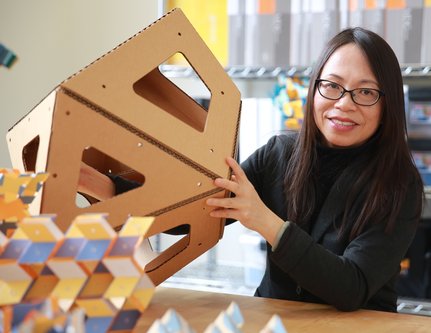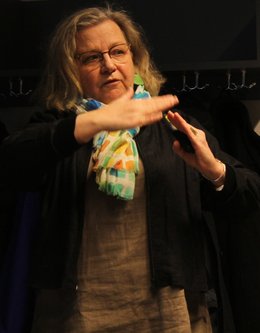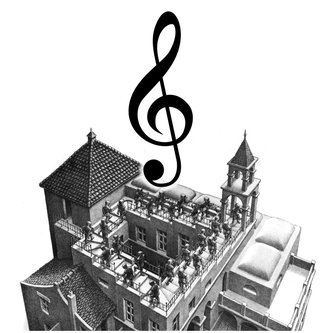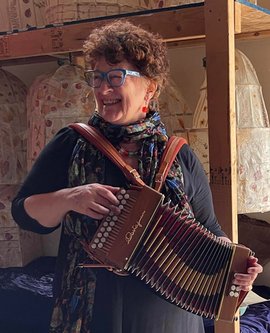
Eskenazi School of Art, Architecture, and Design
From Squaring a Circle to Origami Lampshades: Mathematics in Undergraduate Art and Design Studios
Most of the undergraduate art and design curriculum in the United States has little to do the discipline of mathematics. How to help undergraduate art and design students form an understanding of mathematics that is an integral part of forms, themes, and structures used in art and design? More importantly, how to help these students study essential mathematical concepts and tools and apply them in art and design practices? Through historical precedents and hands-on studio practices, mathematics and its connection to art and design are explored in both theories and practices.
Jiangmei Wu is an interdisciplinary scholar who creates art and design projects that involve mathematics, science, and engineering. Recently, she has been exploring the relationship between geometry, surface texture, computational algorithms, and making techniques in the art and science of paper folding. Her origami-inspired, large-scale installations have been exhibited in cities across the United States as well as in China, Italy, Japan, the Netherlands, and Thailand. She has won several art and design awards, including the American Mathematical Society’s award for the best artwork in 2017 and an honorable mention in 2023 in the category of textile, sculpture, or other medium. She also holds three U.S. patents for her innovative design techniques. Her academic papers have been published in several leading research journals in the fields of architecture, interior design, and mathematical art. In addition, Wu has collaborated on research in STEAM education for engineering and design students.

Aalto University
Picture by Rami Luisto
Shapes in Action
We will discuss about our decade long journey to develop communication between mathematics, arts, design and architecture at Aalto University, Finland. As a concrete opening in education, we have launched a Math&Arts Minor that is open to all university students. We will describe some related interdisciplinary activities and research directions from the perspective of mathematics.

University of Haifa, Israel
Musical Illusions and Paradoxes – Endless Circles in Sound
Can a musical tone rise in pitch continuously, without ever truly getting higher? Can a rhythm accelerate endlessly, yet never become actually faster? The answer is yes. The talk will unravel how such musical illusions work, by delving into the mathematical, physical, and psychoacoustic foundations of sound.
Yuval Nov holds a B.Sc. from the Technion, Israel Institute of Technology, and M.Sc. and PhD from Stanford University. He is a biostatistician faculty member at the University of Haifa, Israel, and an avid hobbyist musician.

University of British Columbia
Opening up new Liminal Spaces for Learning, Research and Creativity With Mathematics and the Arts
There has been increasing acknowledgement of potential interactions between mathematics and the visual and performing arts in education. Often, the arts are used in service of the mathematics, as illustrations or instances of a mathematical idea -- or conversely, mathematics is used in the service of the arts, as a structure or inspiration for creative work. Without opposing either of these 'uses' (of art-applied-to-math, or math-applied-to-art), I want to explore a third, more integrative way as well: an approach where liminal or threshold spaces between the two broad disciplines open up to create something that couldn't exist in either area alone. Liminal in-between spaces are examples of the ways that another world can come into existence within this one, giving breathing room for new ideas and practices that are mutually informing and generative. I will offer examples of several math-art projects of this kind that I've been involved in over the years, and discuss how new research, pedagogies and artistic creativity can arise from collaborative explorations in the opening of these liminal spaces.


